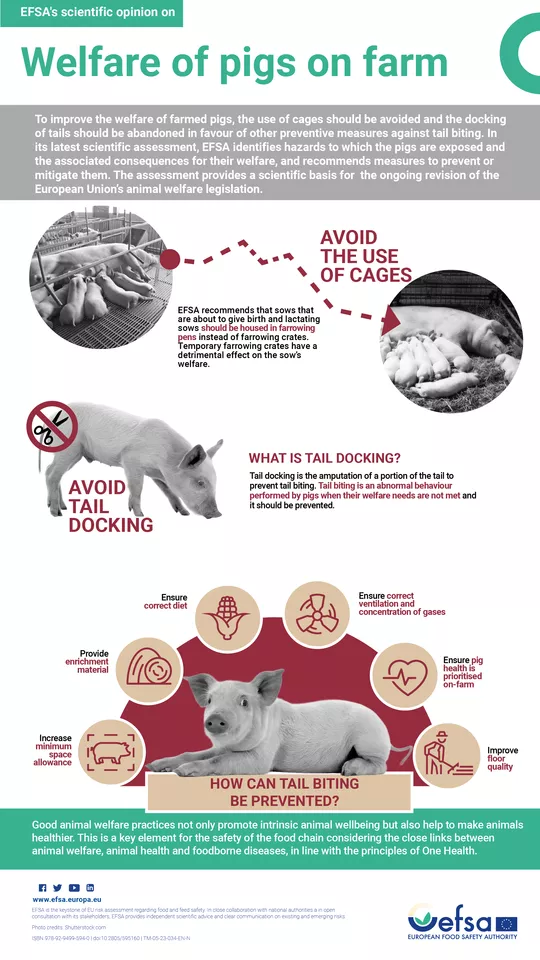Welfare of pigs on farm


To improve the welfare of farmed pigs, the use of cages should be avoided and the docking of tails should be abandoned in favour of other preventive measures against tail biting. In its latest scientific assessment, EFSA identifies hazards to which the pigs are exposed and the associated consequences for their welfare, and recommends measures to prevent or mitigate them. The assessment provides a scientific basis for the ongoing revision of the European Union’s animal welfare legislation.
Avoid the use of cages
EFSA recommends that sows that are about to give birth and lactating sows should be housed in farrowing pens instead of farrowing crates. Temporary farrowing crates have a detrimental effect on the sow’s welfare.
Avoid tail docking
What is tail docking?
Tail docking is the amputation of a portion of the tail to prevent tail biting. Tail biting is an abnormal behaviour performed by pigs when their welfare needs are not met and it should be prevented.
How can tail biting be prevented?
- Increase minimum space allowance
- Provide enrichment material
- Ensure correct diet
- Ensure correct ventilation and concentration of gases
- Ensure pig health is prioritised on-farm
- Improve floor quality
Good animal welfare practices not only promote intrinsic animal wellbeing but also help to make animals healthier. This is a key element for the safety of the food chain considering the close links between animal welfare, animal health and foodborne diseases, in line with the principles of One Health.